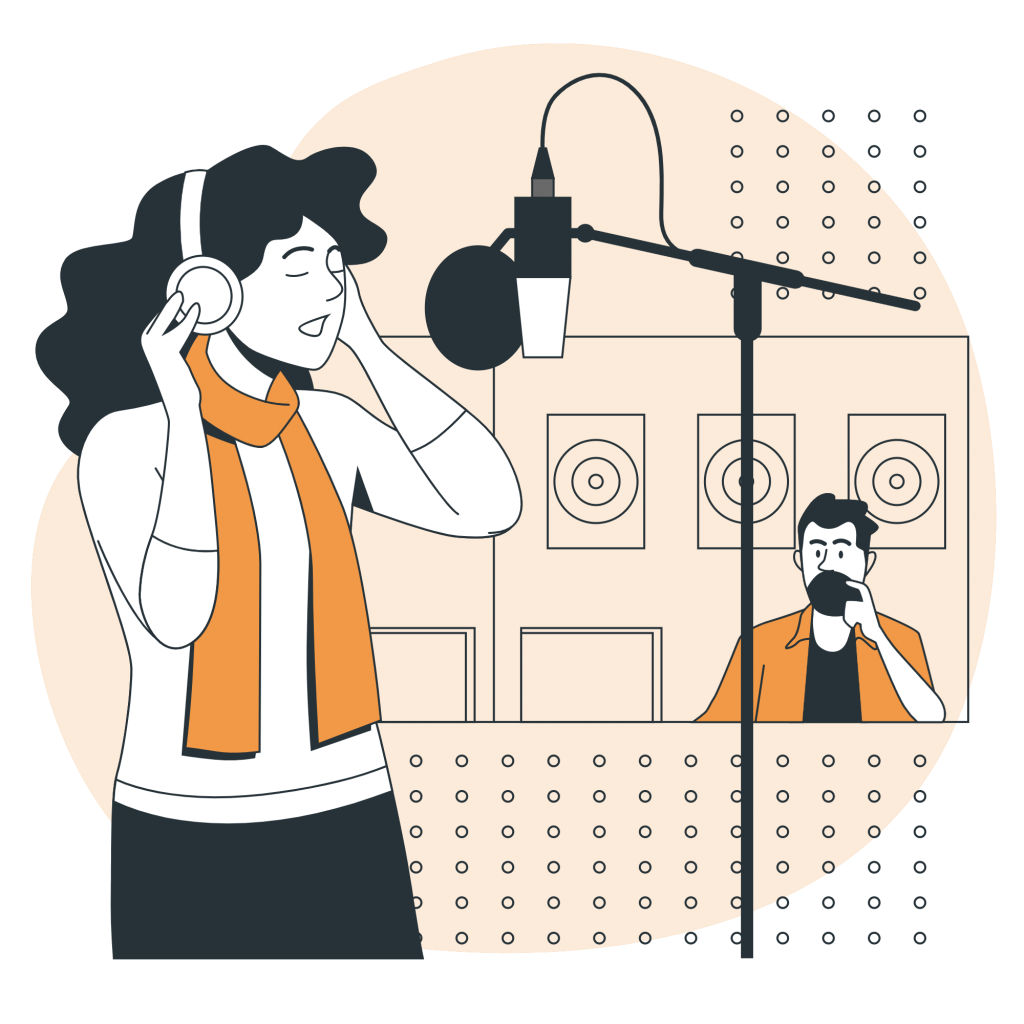There is no occasion in which, in the cinematographic field, terminology does not come up as a source of conflict. This terminology is misleading because we do not use it properly. This is precisely what happens with two such misleading concepts as Voiceover And Voice-Off. These two terms are often used interchangeably, however, they are extremely different. Both are resources that we can use through Text-To-Speech technology. But, like everything else to obtain quality audiovisual products we must be able to understand the theory before establishing the practice. So keep reading Voiceover And Voice-Off: Do Both With This Text-To-Speech API, and learn about this topic.

There is no occasion in which, in the cinematographic field, terminology does not come up as a source of conflict. This is precisely what happens with two such misleading concepts as Voiceover And Voice-Off.
Why Is It Confusing?
Because yes, sometimes we hear voices, although in the cinema the important thing is to know where they come from. And for that, it is necessary to be clear about the concept of diegesis, a term closely related to the previous ones and that does not express more than the inner world that happens in the narration. If Marty McFly plays his guitar at the prom in Back to the Future (1988, Robert Zemeckis) and all the students dance to his chords, the sound coming from his guitar will be diegetic since it is part Of the action.
And although it is directed by the same author; if a feather flies over the road to the sound of “Forrest Gump Theme” by Alan Silvestri; this music will not be diegetic, since neither the characters listen to it nor it derives from the action of the footage itself by Forest Gump (1994).
Like the soundtrack, there can also be non-diegetic sound effects and dialogue, that is, coming from outside the action; it is even possible that the non-diegetic sound completely covers the diegetic, as in 2001: A Space Odyssey (1968, Stanley Kubrick); in which Richard Strauss’s Thus Spoke Zarathustra eliminates the percussion of the bones produced by hominids.
How to know if we are talking about Voiceover or Voice-Off
Let’s go back to Voiceover And Voice-Off. Imagine the documentary Faces and Places directed by Agnès Varda and Jean René (JR) in 2017. In it, the authors travel through France to meet people from all over the country. In the original version, they both talk to each other, so we find their two protagonists talking inside the frame during several sequences. The voice is diegetic, insofar as it emanates from the action, and appears simultaneously with the enunciation. It would be neither voice-over nor voice-over.
In its dubbed version, the dialogue between Varda and JR is maintained, although, with a few seconds of delay, we hear its translation into Spanish. That derived dialogue does refer to the action, yes, but it is outside the original audio track, juxtaposed, indicating that it is a voice-over.
However, if in a scene from Psycho (1960, Alfred Hitchcock) the voice of Norman Bates’s mother appears through the wall, then we are dealing with a voice-off. The same thing happens if we listen to the sound of the news on television during the dinner of some characters, but we are not shown the source. That is, the voice-over (called off-screen in English) is a dialogue that comes from the diegesis and is pertinent for the viewer to hear, but the screenwriter does not want it to be shown in the frame (to hide the fictional mother of Bates or place it on the other side of the wall, or because you want to appreciate the reaction of a character when listening to the last hour on television). In the script, I would mark it as O.S. (short for Off Screen).
Voiceover And Voice-Off: Do Both With This Text-To-Speech API
Woord is a without-charge online text reader with a variety of useful features. It contains more than 50 languages, including a variety of dialects. Furthermore, this API allows one to choose between masculine, feminine, or non-binary voices. All of these features are available without charge, allowing you to test the service before purchasing the premium version. Premium voices, a Chrome plugin, an SSML editor, an MP3 download, and up to 20,000 characters each month are all included in the without-charge edition. With this program, you may also adjust the voice’s speed and format.
Nonetheless, we recommend that for commercial use you buy a premium subscription; they are economic and ready for commercial use. Also, with the premium versions of Woord, you 100% own intellectual property for all files.

How Does It Work?
Just follow these easy steps:
- Select “Online reader” from the menu at www.getwoord.com, or install the Chrome extension on your computer.
- Write your text on the whiteboard or drop the file, then select the desired language of the voice, the gender, speed, and format.
- When you’re finished, click ‘Speak It’ to make sure everything is in order.
- Once you’re satisfied with the outcome, save it to your computer.

